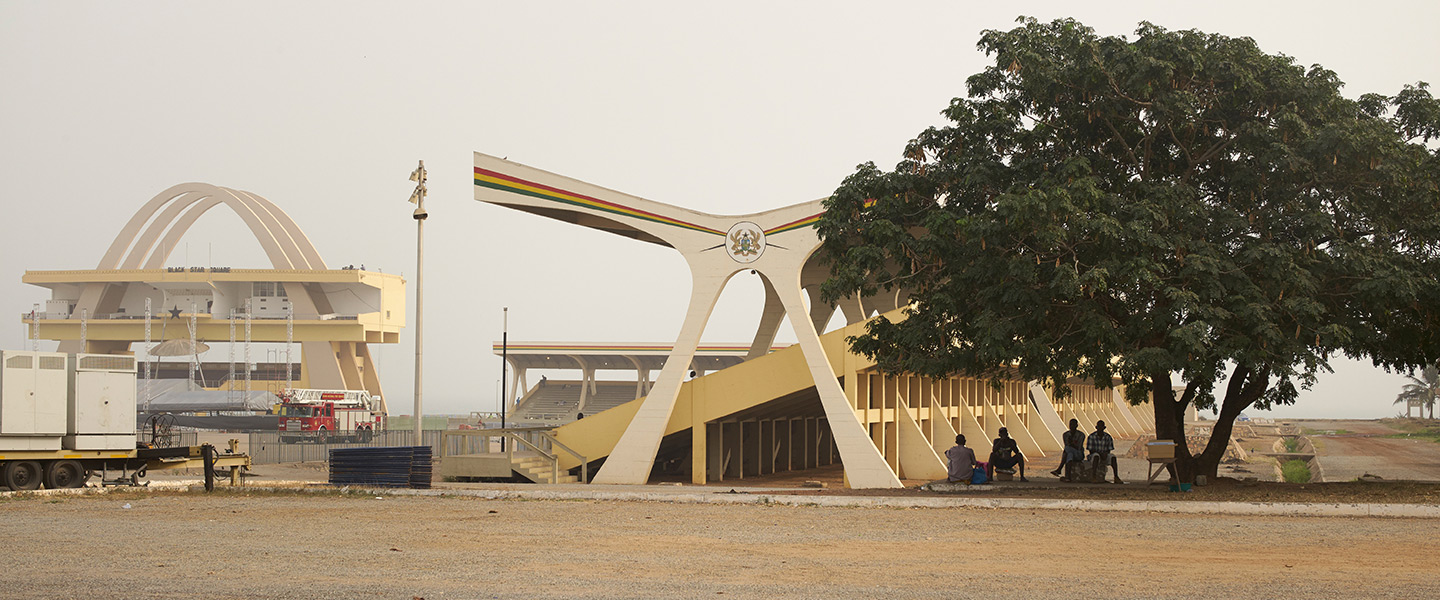Black Star Square, Accra, Ghana, 1961. © Julien Lanoo
Being an architect
In its September issue, L’Architecture d’Aujourd’hui presents an overview of various paths explored by architects to rethink their profession. Impacted by cultural, urban, political, legislative or social evolutions, architects often stretch their skills to adapt themselves to in an environment that constantly redefines project management. The cases studies, presented in the report section, showcase a range of solutions found by professionals to diversify their practice.
In 1975, architect and AA’s editor in chief, Bernard Huet, stood up for the profession in a burning editorial denouncing a sector plagued by political power. Jean-Louis Violeau analyses this “Requiem for an Order” in the “Patrimoine” segment.
What about today? Whether they are recruiting an economist or a lawyer (Fuso agencies Engasser & Associates), launching a cell or a sister company dedicated to research (X-TU, Woodoo) or developing export strategies (Studio Milou, Architecture-Studio), architects must position themselves as “conductors”. A vision shared by Philippe Chiambaretta (PCA / Stream), Lucie Niney (NeM agency) and Carmen Santana (Archikubik), invited by AA to speak about their respective practices and how they are handling the public order withdrawal. A question also studied in a survey conducted by Catherine Sabbah.
And what about tomorrow? The answer might be in Jean-Philippe Hugron’s 2066 anticipation game about the future of architects .
The “Today section” presents a selection of recent buildings, books and exhibitions. One of them is the Oslo Triennale, with a special focus on a Franco-Norwegian collaboration. In “Point de vue”, founder of “do tank” Urbem, Philip Yang – who submitted 12 projects to “Réinventer Paris” – offers a few improvement solutions for this kind of call for projects. In “Portrait”, Swiss Agency HHF, claims the “unfinished” as an architectural force.
The “Regards” section opens up on a symbol: the “Black Star Square” or “Independence Square”, in Accra, Ghana, photographed and captioned by Julien Lanoo for AA. Essayist, novelist, poet and farmer, Pierre Rabhi offers his vision of de-growth in “Acteur”. In “Design”, Giulio Iacchetti (Internoitaliano), defends the use of Italian craftsmanship in daily objects. Performance is an art of many possibilities, as reminded in the “Art” column.
Finally, the “Trends” section highlights, through a selection of projects, the role of material libraries within architecture practices while presenting a special feature on bathrooms.


